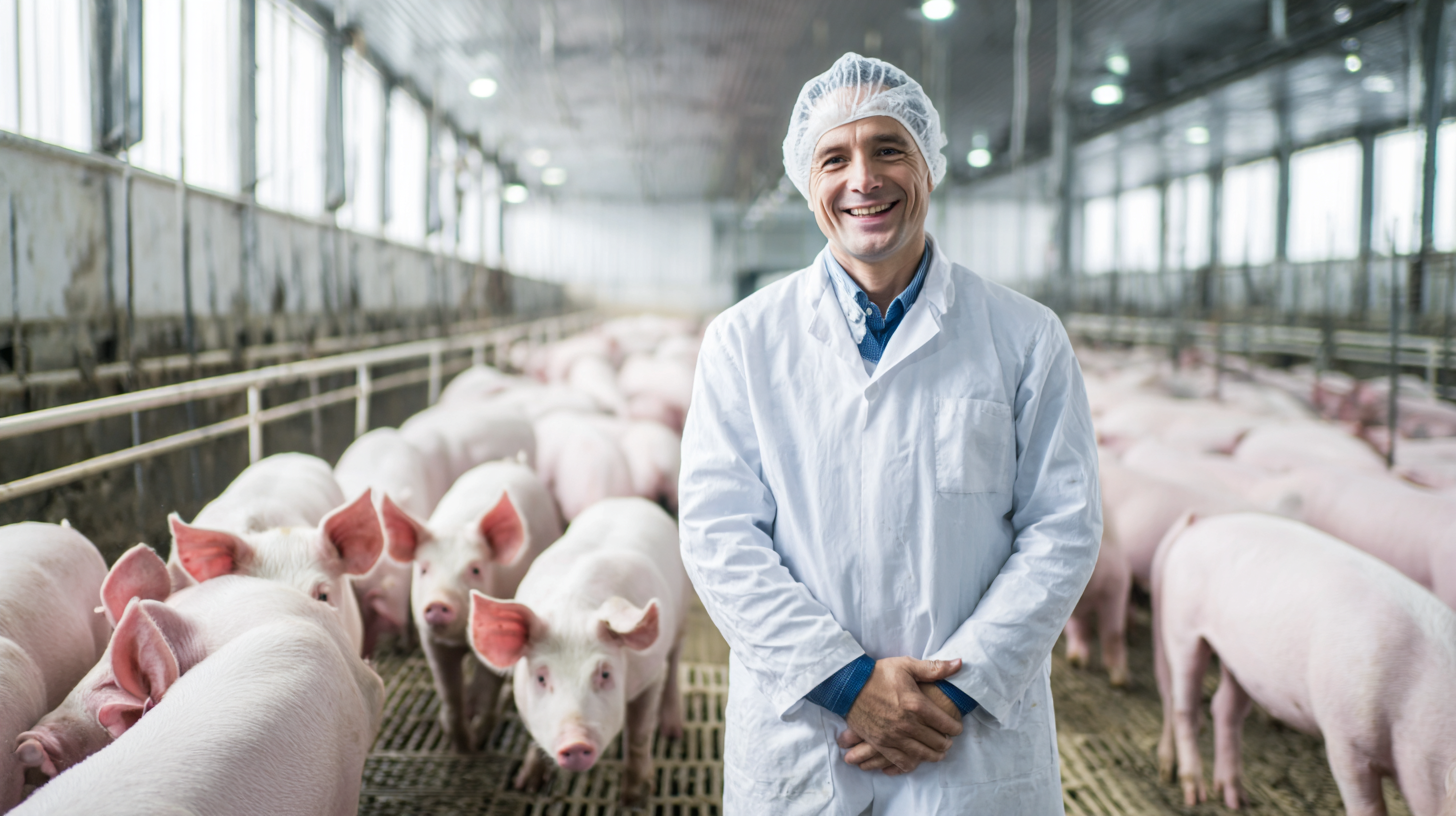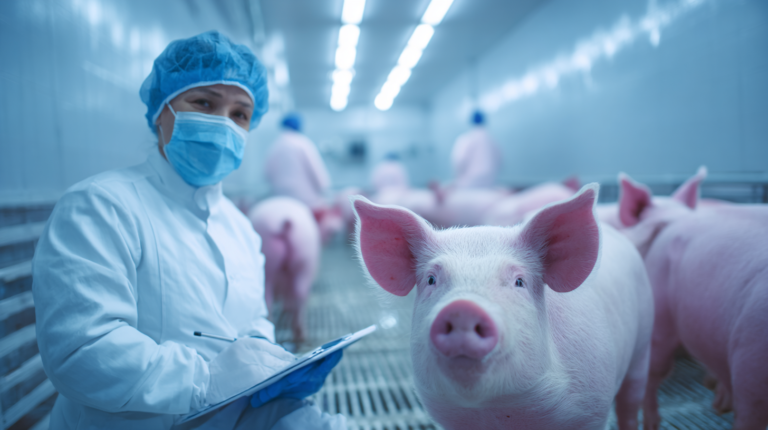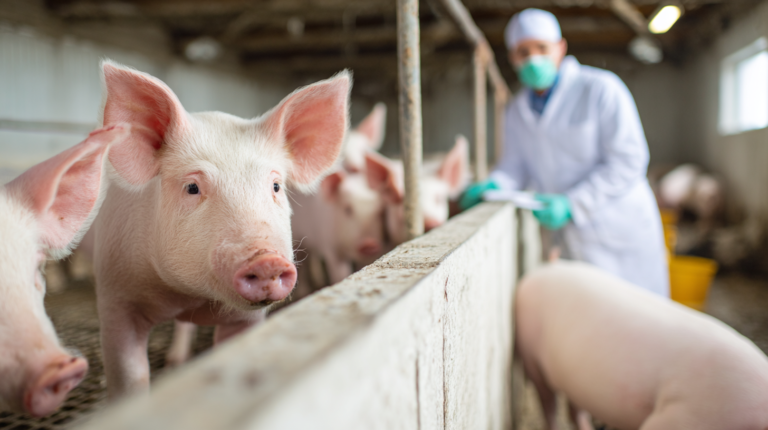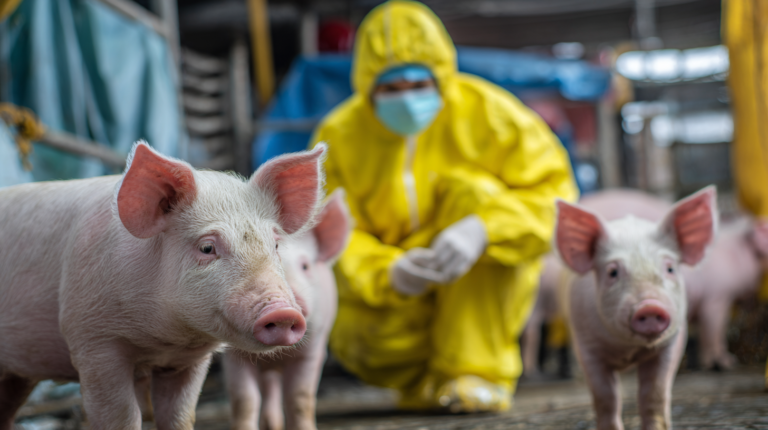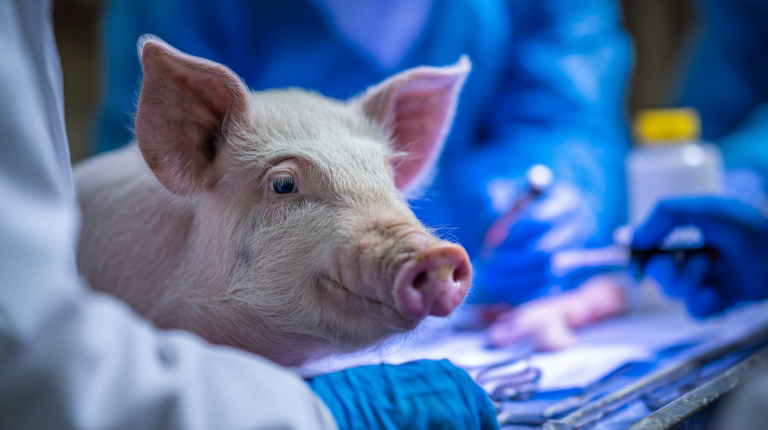Discover the critical signs of PRRS virus in pigs and learn proven prevention strategies. Expert veterinary guide to protect your swine herd from this costly disease.
Table of Contents
Porcine Reproductive and Respiratory Syndrome (PRRS) remains one of the most economically devastating diseases affecting swine operations worldwide. The PRRS virus in pigs causes severe reproductive failures in breeding stock and respiratory distress in growing pigs, resulting in billions of dollars in losses annually across the global pork industry. Understanding the warning signs and implementing effective prevention strategies can mean the difference between a thriving operation and catastrophic losses.
This comprehensive guide will explore the five most powerful indicators of PRRS infection, dive deep into prevention methodologies, and provide actionable insights based on current veterinary science. Whether you’re a seasoned pig producer or new to swine management, recognizing these critical signs early can save your operation from devastating consequences.
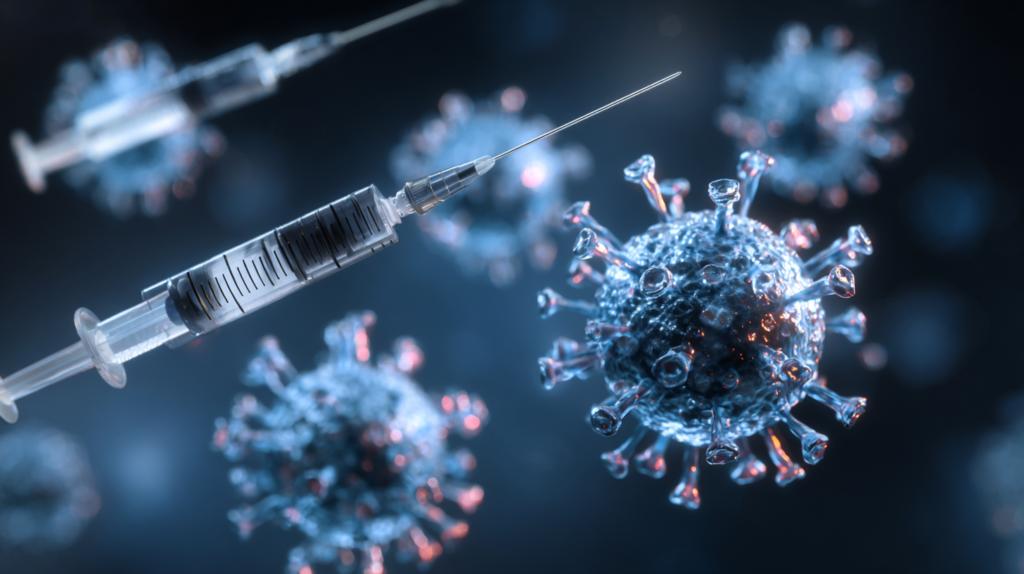
The PRRS virus in pigs continues to evolve, with new strains emerging regularly, making vigilance and education more crucial than ever. Recent studies indicate that PRRS costs the U.S. pork industry approximately $664 million annually, with individual farm losses ranging from $200 to $300 per sow per year during acute outbreaks.
Understanding PRRS Virus in Pigs: The Silent Threat
| Sign/Symptom | Description | Severity Level | Time of Onset |
|---|---|---|---|
| Reproductive Failures | Increased returns to estrus, irregular cycles, reduced conception rates, stillbirths, mummified fetuses | High | 2-4 weeks post-infection |
| Respiratory Distress | Labored breathing, coughing, nasal discharge, reduced oxygen saturation, pneumonia | High | 1-2 weeks post-infection |
| Growth Performance Decline | Reduced feed efficiency, slower weight gain, poor feed conversion ratios, stunted growth | Medium | 2-6 weeks post-infection |
| Increased Mortality | Higher than normal death rates, particularly in nursery and finishing pigs | High | 3-8 weeks post-infection |
| Secondary Infections | Bacterial pneumonia, streptococcal meningitis, increased susceptibility to other pathogens | Medium | 4-12 weeks post-infection |
| Behavioral Changes | Reduced activity, altered social interactions, changes in eating patterns, lethargy | Low | 1-3 weeks post-infection |
PRRS virus belongs to the Arteriviridae family and specifically targets macrophages in the respiratory and reproductive systems of pigs. This RNA virus demonstrates remarkable genetic diversity, with two main genotypes: European (Type 1) and North American (Type 2). The virus’s ability to mutate rapidly and establish persistent infections makes it particularly challenging to control through vaccination alone.
The pathogenesis of PRRS involves complex interactions between the virus and the host immune system. Upon infection, the virus primarily replicates in pulmonary alveolar macrophages, leading to immunosuppression and secondary bacterial infections. This immunosuppressive effect explains why PRRS-infected pigs become more susceptible to other pathogens, creating a cascade of health problems that can devastate entire herds.
Recent research published in the Journal of Veterinary Science demonstrates that PRRS virus can persist in infected pigs for extended periods, with some animals remaining carriers for up to 250 days post-infection. This persistence contributes significantly to the challenge of eliminating the virus from infected herds and highlights the importance of comprehensive monitoring and management strategies.
The economic impact extends beyond direct mortality and morbidity costs. PRRS infections result in increased feed conversion ratios, reduced average daily gain, delayed market weights, and decreased carcass quality. Additionally, the need for increased veterinary interventions, medications, and labor creates substantial indirect costs that compound the overall economic burden.
The 5 Powerful Signs of PRRS Virus in Pigs
1. Reproductive Failures: The Most Devastating Indicator
Reproductive failure represents the hallmark sign of PRRS virus in pigs, particularly affecting breeding sows and gilts. These failures manifest in multiple ways, each indicating different stages or severities of infection.
Increased Abortion Rates: Abortions typically occur during the last trimester of pregnancy, with rates potentially reaching 50-100% in naive herds during acute outbreaks. The aborted fetuses often appear mummified, stillborn, or weakly viable. Post-mortem examination reveals characteristic lesions including interstitial pneumonia, myocarditis, and lymphoid depletion.
Stillbirths and Weak Piglets: Even when pregnancies reach full term, PRRS-infected sows frequently deliver stillborn piglets or those with severe congenital defects. Surviving piglets often exhibit respiratory distress, failure to thrive, and increased susceptibility to secondary infections. These piglets typically display a characteristic “thumping” breathing pattern and may show cyanosis (blue coloration) of extremities.
Delayed Return to Estrus: Infected sows may experience significantly delayed return to estrus, extending the weaning-to-breeding interval and reducing overall reproductive efficiency. This delay can persist for several weeks post-infection, substantially impacting farm productivity and profitability.
Reduced Conception Rates: Even when sows do return to estrus, conception rates often remain depressed for months following infection. This reduction in fertility requires careful monitoring and may necessitate adjustments to breeding protocols and genetic selection strategies.
2. Respiratory Distress: The Visible Struggle
Respiratory symptoms in PRRS-infected pigs present as a complex syndrome affecting animals across all age groups, though manifestations vary significantly based on age, immune status, and concurrent infections.
Labored Breathing and Dyspnea: Infected pigs develop characteristic labored breathing patterns, often described as “thumping” or “pumping” respirations. This dyspnea results from interstitial pneumonia and secondary bacterial infections that compromise lung function. The breathing difficulty becomes more pronounced during physical activity or stress.
Chronic Coughing: A persistent, dry cough develops in many infected pigs, particularly in growing and finishing animals. This cough often worsens in dusty conditions or during periods of temperature fluctuation. The cough may be accompanied by nasal discharge, initially clear but potentially becoming purulent with secondary bacterial infections.
Reduced Exercise Tolerance: Infected pigs demonstrate marked reduction in activity levels and exercise tolerance. Animals that previously moved freely become reluctant to walk long distances and may appear lethargic or depressed. This behavioral change often precedes more obvious clinical signs by several days.
Cyanosis and Altered Mucous Membrane Color: In severe cases, pigs may develop cyanosis, particularly visible in the ears, snout, and extremities. The mucous membranes may appear pale or bluish, indicating compromised oxygen circulation. This sign typically indicates advanced disease and poor prognosis.
3. Growth Performance Decline: The Economic Devastation
Growth performance impacts represent one of the most economically significant aspects of PRRS infection, affecting farm profitability long after clinical signs resolve.
Reduced Average Daily Gain: PRRS-infected pigs consistently show decreased average daily gain (ADG), with reductions typically ranging from 10-30% during acute infection phases. This reduction persists well beyond the clinical phase, with some studies showing growth impacts lasting 8-12 weeks post-infection.
Increased Feed Conversion Ratio: Infected pigs require significantly more feed to achieve the same weight gains as healthy animals. Feed conversion ratios may increase by 0.2-0.5 points during acute infections, representing substantial economic losses when calculated across entire production cycles.
Delayed Market Weight Achievement: The combination of reduced growth rates and increased feed requirements results in significant delays in reaching market weight. These delays often extend finishing periods by 2-4 weeks, increasing production costs and reducing facility turnover efficiency.
Increased Variation in Pig Weights: PRRS infections create increased variation within pig groups, resulting in uneven weights at marketing time. This variation complicates management decisions and may result in some pigs being held back for additional feeding, further increasing costs.
4. Increased Mortality Rates: The Ultimate Cost
Mortality associated with PRRS virus in pigs varies significantly based on multiple factors, including viral strain virulence, concurrent infections, management practices, and environmental conditions.
Nursery Pig Mortality: Mortality in nursery pigs (3-8 weeks of age) can increase dramatically during PRRS outbreaks, with rates potentially reaching 15-25% compared to normal rates of 2-4%. These deaths often result from secondary bacterial infections, particularly Streptococcus suis, Haemophilus parasuis, and Pasteurella multocida.
Finishing Pig Losses: While finishing pigs typically show lower mortality rates than nursery pigs, increases of 3-8% above normal levels commonly occur during PRRS outbreaks. These losses often result from respiratory complications and secondary infections rather than direct viral effects.
Breeding Stock Mortality: Sow mortality may increase by 2-5% during acute PRRS outbreaks, with deaths often occurring peripartum or during the immediate post-weaning period. Gilt mortality may be even higher, particularly in naive populations experiencing their first PRRS exposure.
Chronic Mortality Patterns: Even after acute phases resolve, many operations experience persistently elevated mortality rates for months following initial PRRS introduction. This chronic mortality pattern reflects ongoing immune suppression and increased susceptibility to opportunistic pathogens.
5. Secondary Infections: The Cascade Effect
The immunosuppressive effects of PRRS virus create optimal conditions for secondary bacterial, viral, and parasitic infections, often resulting in more severe disease than PRRS alone.
Bacterial Pneumonia: Secondary bacterial pneumonia represents the most common and economically significant complication of PRRS infection. Common bacterial pathogens include Actinobacillus pleuropneumoniae, Pasteurella multocida, Streptococcus suis, and Mycoplasma hyopneumoniae. These infections often prove more severe and persistent than in PRRS-naive pigs.
Enteric Infections: PRRS-infected pigs show increased susceptibility to enteric pathogens including Escherichia coli, Salmonella species, and Lawsonia intracellularis. These infections contribute to reduced growth performance and increased mortality, particularly in nursery and early finishing phases.
Parasitic Infestations: The immunosuppression associated with PRRS infection may result in increased parasitic burdens, including both internal parasites (roundworms, whipworms) and external parasites (mange mites, lice). These parasitic infections further compromise animal welfare and performance.
Viral Co-infections: PRRS-infected pigs demonstrate increased susceptibility to other viral pathogens, including influenza, porcine circovirus, and porcine epidemic diarrhea virus. These co-infections often result in more severe disease presentations and prolonged recovery periods.
Comprehensive Prevention Strategies
| Prevention Strategy | Implementation Details | Effectiveness | Cost Level |
|---|---|---|---|
| Biosecurity Protocols | Quarantine procedures, visitor restrictions, vehicle disinfection, perimeter security | High | Moderate |
| Vaccination Programs | Modified live virus (MLV) vaccines, killed vaccines, regular boosters, strain matching | Moderate | High |
| Herd Management | All-in/all-out systems, age segregation, proper ventilation, density control | High | Moderate |
| Feed Safety | Source verification, ingredient testing, feed additives, proper storage conditions | Medium | Low |
| Environmental Disinfection | Regular cleaning schedules, appropriate disinfectants, proper contact time, coverage | High | Low |
| Health Monitoring | Regular testing, production monitoring, early detection systems, record keeping | High | Moderate |
| Genetic Selection | Breeding for disease resistance, genetic markers, performance testing, pedigree tracking | Medium | High |
Biosecurity: The Foundation of PRRS Prevention
Effective biosecurity represents the cornerstone of PRRS prevention, requiring comprehensive protocols that address all potential routes of virus introduction and transmission.
Perimeter Security: Establishing secure perimeters around production facilities involves multiple components including fencing, controlled access points, and visitor restrictions. All vehicles entering the premises should undergo disinfection protocols, and non-essential personnel should be restricted from production areas.
Personnel Protocols: All personnel entering production facilities must follow strict protocols including shower-in/shower-out procedures, facility-specific clothing and footwear, and appropriate downtime periods between farm visits. These protocols should be documented, regularly updated, and consistently enforced across all staff levels.
Feed and Supply Management: Feed ingredients and supplies represent potential PRRS transmission routes that require careful attention. Feed should be sourced from reputable suppliers with documented PRRS-negative status, and all supplies should undergo appropriate disinfection procedures before facility entry.
Truck and Transportation Biosecurity: Transportation vehicles pose significant PRRS transmission risks and require comprehensive cleaning and disinfection protocols. These protocols should address both external vehicle surfaces and internal compartments, with particular attention to areas that may retain organic material.
Vaccination Programs: Strategic Immunization
PRRS vaccination represents a critical component of comprehensive prevention strategies, though vaccine selection and implementation require careful consideration of multiple factors.
Modified Live Virus (MLV) Vaccines: MLV vaccines provide broader cross-protection against diverse PRRS strains but carry risks of reversion to virulence and potential respiratory reactions. These vaccines typically provide better protection against reproductive failures than respiratory disease and require careful timing relative to breeding schedules.
Killed Virus Vaccines: Killed vaccines offer safety advantages over MLV vaccines but generally provide narrower protection against field strains. These vaccines may be more appropriate for certain situations, particularly in herds with concurrent respiratory pathogens or specific management constraints.
Vaccination Timing and Protocols: Optimal vaccination timing depends on numerous factors including herd PRRS status, breeding schedules, and management practices. Many operations implement mass vaccination protocols during periods of low reproductive activity, while others use continuous vaccination programs tailored to individual animal needs.
Vaccine Strain Selection: Selecting appropriate vaccine strains requires consideration of local field strain characteristics, previous vaccination history, and anticipated challenge pressures. Regular monitoring of field strain genetics through diagnostic testing helps guide vaccine selection decisions.
Genetic Resistance: Long-term Solutions
Genetic selection for PRRS resistance represents an emerging strategy with significant long-term potential for reducing disease impacts.
Host Genetic Factors: Recent research has identified specific genetic markers associated with PRRS resistance, including variations in the CD163 receptor gene and certain MHC class I and II alleles. These discoveries offer potential for incorporating disease resistance into breeding programs.
Selective Breeding Programs: Several genetic companies have developed breeding programs specifically targeting PRRS resistance, utilizing both traditional selection methods and modern genomic technologies. These programs typically focus on multiple traits including viral load reduction, improved reproductive performance during infection, and enhanced survival rates.
Gene Editing Technologies: Emerging gene editing technologies, particularly CRISPR-Cas9, offer potential for developing pigs with enhanced PRRS resistance. Research has successfully demonstrated the creation of pigs lacking functional CD163 receptors, showing complete resistance to PRRS infection.
Challenges and Considerations: While genetic approaches show promise, several challenges remain including maintaining other important production traits, addressing potential impacts on overall immune function, and ensuring consumer acceptance of genetically modified animals.
Environmental Management: Optimizing Conditions
Environmental factors significantly influence PRRS transmission and disease severity, making environmental management a crucial component of prevention strategies.
Ventilation Systems: Proper ventilation systems help reduce airborne transmission while maintaining optimal temperature and humidity levels. These systems should provide adequate air exchange rates, minimize drafts, and incorporate appropriate filtration where feasible.
Temperature and Humidity Control: Maintaining optimal temperature and humidity levels reduces stress and supports immune function. Temperature fluctuations and high humidity levels can exacerbate respiratory symptoms and increase susceptibility to secondary infections.
Stocking Density Management: Appropriate stocking densities reduce stress and disease transmission while supporting optimal growth performance. Overcrowding increases contact rates between animals and creates conditions favorable for pathogen transmission.
Waste Management: Proper waste management systems reduce pathogen loads and minimize environmental contamination. These systems should address both solid waste removal and liquid waste treatment, with particular attention to preventing cross-contamination between production areas.
Diagnostic Approaches and Monitoring
| Timeline Phase | Diagnostic Method | Treatment Approach | Expected Outcomes | Priority |
|---|---|---|---|---|
| Week 1-2 Initial Detection |
RT-PCR testing, clinical observation, production monitoring | Immediate isolation, supportive care, ventilation optimization | Virus confirmation, initial containment | Critical |
| Week 2-4 Acute Phase |
Serology (ELISA), tissue sampling, continuous monitoring | Antibiotic therapy for secondary infections, immune support | Disease progression assessment, secondary infection control | Critical |
| Week 4-8 Peak Impact |
Quantitative PCR, reproductive monitoring, mortality tracking | Targeted antibiotic protocols, nutritional support, stress reduction | Peak clinical signs, maximum economic impact | High |
| Week 8-12 Stabilization |
Follow-up serology, production trend analysis, herd assessment | Gradual treatment reduction, enhanced biosecurity, monitoring | Clinical improvement, production recovery begins | High |
| Week 12-20 Recovery Phase |
Periodic testing, performance monitoring, immunity assessment | Vaccination programs, herd rebuilding, preventive measures | Production normalization, immunity development | Moderate |
| Week 20+ Long-term |
Annual testing, surveillance programs, genetic monitoring | Maintenance protocols, genetic selection, continuous improvement | Herd stability, resistance building, prevention focus | Moderate |
Laboratory Testing Methods
Accurate diagnosis of PRRS requires sophisticated laboratory testing methods that can differentiate between viral strains and assess infection status across different production phases.
RT-PCR Testing: Real-time reverse transcription polymerase chain reaction (RT-PCR) represents the gold standard for PRRS diagnosis, offering high sensitivity and specificity. This testing method can detect viral RNA in various sample types including blood, oral fluids, and tissues, making it valuable for both individual animal diagnosis and herd monitoring.
Serology Testing: Enzyme-linked immunosorbent assays (ELISA) detect antibodies against PRRS virus, providing information about infection history and immune status. These tests are particularly valuable for monitoring herd immunity levels and assessing vaccination effectiveness.
Viral Sequencing: Genetic sequencing of PRRS isolates provides crucial information about viral strain characteristics, helping guide treatment decisions and prevention strategies. This information is particularly valuable for tracking disease transmission patterns and assessing vaccine compatibility.
Oral Fluid Testing: Oral fluid testing offers a non-invasive method for monitoring PRRS status in pig populations. This approach is particularly valuable for routine surveillance and can provide early warning of infection status changes.
Monitoring Protocols
Effective PRRS monitoring requires systematic approaches that provide timely information about infection status and disease progression.
Production Monitoring: Regular tracking of production parameters including reproductive performance, growth rates, and mortality provides early indicators of potential PRRS impacts. These parameters should be monitored continuously and compared to historical baselines to identify concerning trends.
Clinical Surveillance: Systematic clinical surveillance involves regular assessment of animals for PRRS-associated symptoms including respiratory distress, reproductive failures, and behavioral changes. This surveillance should be conducted by trained personnel using standardized protocols.
Laboratory Surveillance: Routine laboratory testing provides objective assessment of PRRS status and helps guide management decisions. Testing protocols should be tailored to specific operation needs and may include regular sampling schedules or trigger-based testing approaches.
Record Keeping: Comprehensive record keeping systems document all aspects of PRRS monitoring and management, providing valuable information for trend analysis and decision-making. These records should include clinical observations, laboratory results, production parameters, and management interventions.
Treatment and Management During Outbreaks
Supportive Care Protocols
While no specific antiviral treatments exist for PRRS, comprehensive supportive care protocols can significantly improve outcomes during outbreaks.
Respiratory Support: Pigs with respiratory distress may benefit from environmental modifications including improved ventilation, reduced dust levels, and optimal temperature control. In severe cases, individual animals may require oxygen therapy or bronchodilator treatments.
Nutritional Support: Infected pigs often show reduced feed intake, making nutritional support crucial for recovery. High-quality, easily digestible feeds with appropriate vitamin and mineral supplementation can help support immune function and recovery.
Stress Reduction: Minimizing stress during outbreaks helps reduce disease severity and supports recovery. This includes maintaining consistent routines, minimizing handling, and providing comfortable environmental conditions.
Antimicrobial Therapy: While antibiotics are ineffective against PRRS virus, they play crucial roles in controlling secondary bacterial infections. Antibiotic selection should be based on bacterial culture and sensitivity testing when possible.
Herd Management Strategies
Effective herd management during PRRS outbreaks requires coordinated approaches that address both infected and susceptible animals.
Isolation and Quarantine: Implementing appropriate isolation and quarantine procedures helps limit virus spread while allowing for targeted treatment of affected animals. These procedures should address both animal movement and personnel protocols.
Population Management: Strategic population management decisions, including adjustments to breeding schedules and market timing, can help minimize outbreak impacts. These decisions should consider both immediate needs and long-term recovery goals.
Facility Cleaning and Disinfection: Enhanced cleaning and disinfection protocols during outbreaks help reduce pathogen loads and limit transmission. These protocols should address all areas of the facility including equipment, surfaces, and air handling systems.
Communication and Coordination: Effective communication among all personnel involved in outbreak response ensures coordinated efforts and consistent implementation of management protocols. This includes regular updates on animal status, treatment protocols, and management decisions.
For more expert pet care tips and product recommendations, visit BlithePet.com — your trusted source for pet wellness.
Recovery and Post-Outbreak Management
Herd Stabilization Strategies
Following acute PRRS outbreaks, implementing comprehensive stabilization strategies helps restore productivity and prevent reinfection.
Immunity Assessment: Evaluating herd immunity levels through serological testing helps determine recovery status and guide future management decisions. This assessment should include breeding stock, replacement animals, and growing pig populations.
Genetic Stability Evaluation: Assessing the genetic stability of circulating PRRS strains helps predict future challenges and guide vaccination strategies. This evaluation may involve regular viral sequencing and comparison with historical isolates.
Production Recovery Monitoring: Systematic monitoring of production parameters helps assess recovery progress and identify areas requiring additional attention. This monitoring should include reproductive performance, growth rates, and health indicators.
Management Protocol Updates: Post-outbreak evaluations often reveal opportunities for improving management protocols and prevention strategies. These updates should address identified weaknesses and incorporate lessons learned during the outbreak response.
Long-term Prevention Planning
Successful PRRS management requires long-term planning that addresses ongoing risks and prevention strategies.
Risk Assessment Updates: Regular risk assessments help identify changing threats and guide prevention strategy adjustments. These assessments should consider factors including regional disease patterns, operational changes, and new research findings.
Technology Integration: Emerging technologies including real-time monitoring systems, advanced diagnostics, and precision agriculture tools offer opportunities for improving PRRS prevention and management. Integration of these technologies should be carefully planned and implemented.
Training and Education: Ongoing training and education for all personnel involved in pig production helps ensure consistent implementation of prevention strategies and rapid recognition of potential problems. This training should be regularly updated to reflect current best practices.
Industry Collaboration: Collaboration with other producers, veterinarians, and industry organizations helps share knowledge and coordinate prevention efforts. This collaboration is particularly important for addressing regional disease challenges and emerging threats.
PRRS Virus in Pigs: Expert Answers
Get comprehensive answers to the most important questions about PRRS prevention, diagnosis, and treatment
What is the most reliable way to diagnose PRRS virus in pigs? +
How long does PRRS virus remain infectious in the environment? +
Can PRRS virus be transmitted through feed ingredients? +
What is the difference between PRRS Type 1 and Type 2 viruses? +
How effective are current PRRS vaccines? +
What are the early warning signs of PRRS in a breeding herd? +
Conclusion
The PRRS virus in pigs continues to pose significant challenges to swine producers worldwide, but understanding the five powerful signs and implementing comprehensive prevention strategies can dramatically reduce its impact. From recognizing reproductive failures and respiratory distress to monitoring growth performance decline and increased mortality rates, early detection remains crucial for effective management.
Successful PRRS prevention requires a multifaceted approach combining robust biosecurity measures, strategic vaccination programs, environmental management, and ongoing monitoring. While the virus’s ability to mutate and persist creates ongoing challenges, advances in diagnostic technology, genetic research, and management strategies offer hope for improved control in the future.
The economic importance of PRRS prevention cannot be overstated, with proper management potentially saving operations hundreds of thousands of dollars annually. By staying vigilant for the warning signs described in this guide and implementing comprehensive prevention protocols, pig producers can protect their herds and maintain profitable operations despite this persistent threat.
Remember that PRRS management is an ongoing process requiring continuous attention, regular protocol updates, and close collaboration with veterinary professionals. The investment in prevention and early detection pays dividends through improved animal welfare, enhanced productivity, and sustainable profitability.
Have a similar experience with your pet? Share it in the comments below!

